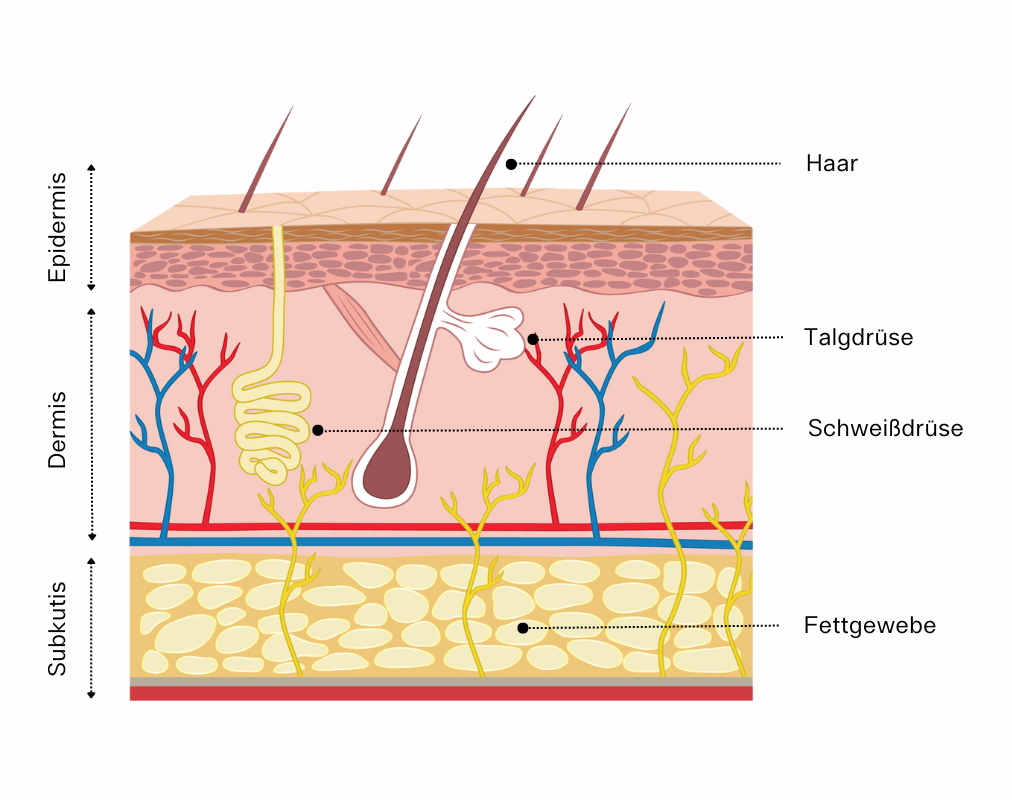Hauttypen

Welche hauttypen gibt es?
FINDE DEINEN Hauttyp:

Merkmale: ölige T-Zone, vergrößerte Poren, Kombination aus Hauttypen
Hautstruktur & Poren: kann in der T-Zone ölig sein, an anderen Stellen nicht, verschiedene größen von Poren
Teint: uneben, glänzend, unausgeglichen

Merkmale: überschüssige Talgproduktion, erweiterte Poren, Anfälligkeit für Hautunreinheiten
Hautstruktur & Poren: oft fettig, sichtbar erweiterte Poren, besonders in der T-Zone
Teint: glänzend, fettig, schwer

Merkmale: ausgewogenes Feuchtigkeitsniveau
Hautstruktur & Poren: glatte Hautstruktur, feine Poren
Teint: ausgeglichen, glatt, stahlend

Merkmale: Trockenheitsgefühl, Mangel an natürlicher Fettproduktion, Empfindlichkeit gegenüber äußeren Einflüssen
Hautstruktur & Poren: dünne und empfindliche Haut, kaum sichtbare, feine Poren
Teint: matt, schuppig, rau
Wie ist die Haut aufgebaut?

Erfahre mehr
SKIN REDNESS

A damaged skin barrier and oversensitive nerve fibers make the facial skin more prone to irritation and increase its sensitivity. While many symptoms of sensitive skin are not visible, some individuals may experience redness in the appearance of their skin. Reddened skin is a condition where the skin shows unusual redness, which can be caused by various factors. This redness can affect different parts of...
